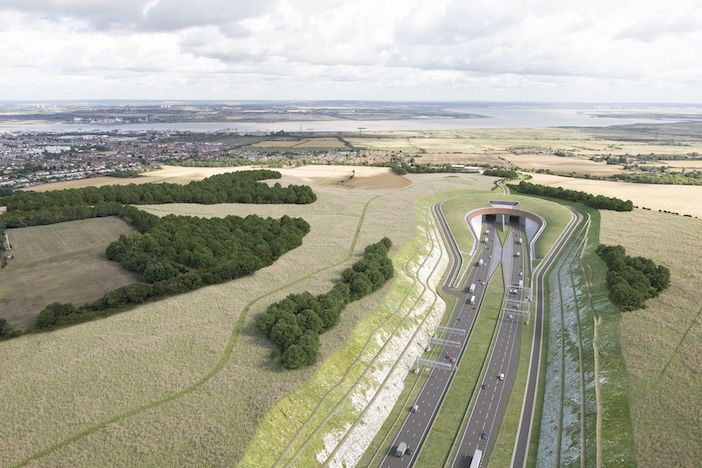National Highways UK’s Lower Thames Crossing project will make history as the first major UK infrastructure project to completely eliminate diesel from its construction sites by 2027, through a commitment to electric vehicles and hydrogen-powered heavy machinery. The award of the contract for hydrogen supply is expected later this year, marking a milestone for OEMs in the construction industry.
This approach to zero-emission construction is part of a new target announced by National Highways UK on 4 February to reduce construction carbon emissions by 70% – making it the greenest road ever built in the UK.
“The Lower Thames Crossing will not only tackle congestion and unlock economic growth in the UK, with our partners and suppliers we will create a new blueprint for how we build low-carbon infrastructure,” says Katharina Ferguson, supply chain development director, Lower Thames Crossing.
The project’s commitment to zero-emission machinery represents a major opportunity for OEMs developing electric and hydrogen-powered construction equipment. By working closely with its three delivery partners and supply chain, the project has already halved its predicted construction carbon footprint, becoming the first major project in the UK to make it a legally binding limit in its October 2022 Development Consent application.
The project team aims to achieve its target total carbon footprint of less than 840,000 tonnes through a comprehensive strategy that will completely eliminate diesel from construction sites by 2027. This will be accomplished through the large-scale deployment of electric vehicles and construction plant, alongside pioneering use of hydrogen power for heavy construction machinery. The strategy also includes the exclusive use of low-carbon steel and concrete, while taking a forensic approach to carbon reduction in road design refinement.

The Lower Thames Crossing is designed to tackle congestion and unlock economic growth by almost doubling road capacity across the Thames east of London. The project’s carbon pathfinder status is already setting new standards for building infrastructure by pioneering and scaling up approaches to low-carbon construction.
The project’s focus on sustainable construction extends to its broader environmental initiatives. Rather than building a bridge, the crossing will utilize a tunnel to protect wetlands and marshes, and include seven green bridges for wildlife and community use. Additionally, the project commits to planting at least 1 million trees and creating new community woodlands and public parks.
Construction readiness is already well advanced, with the project team prepared to begin work pending government approval. The Secretary of State for Transport has extended the deadline for a decision on the planning application to 23 May 2025, with construction expected to take six years subject to planning permission and funding.
The project has already achieved significant progress across multiple fronts. Detailed design work is actively advancing to optimize and reduce local impacts. The implementation of a £250,000 Community Fund has already benefited 55 local organisations, while the launch of a Skills Hub pilot programme is helping develop local expertise. Meanwhile, the Hole Farm community woodland project is making substantial progress, with 80,000 trees already planted using low-carbon construction methods.





